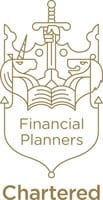Many people, business owners or not, know of a couple of finance options for their next big purchase or to improve cash flow but most don’t understand the difference or know alternatives.
Here I will focus on the main options people have heard of and some common alternatives that I see regularly. I would always suggest discussing your options with a professional to make sure you get the best one for you.
The first one is Hire purchase (HP)
- You buy the asset over a set period of time with complete ownership at the end.
- Once you sign the agreement, the asset is yours to use, maintain and pay for.
- You also get tax relief on the interest you pay and in most cases tax relief on the cost of the asset at the date of purchase.
This is very similar to a loan except there are major differences.
- The security given. HP is often secured against the asset which means if you don’t pay, they take it away.
- A loan is typically unsecured, which mean if you don’t pay the bank can demand the balance of the loan and repossess assets to the value owed which may be more than what you purchased. You may also have to give personal security which means they could actually take your personal goods such as cars, jewellery or other items with value.
- The interest rate. Due to the higher risk of only securing the debt against the goods purchased and quite often the use of a third party, HP tends to come with higher interest although you may actually get 0% deals.
The next most common method of financing goods is a Finance Lease or Personal Contract Purchase (PCP). These options are effectively just a rental of goods and some give you the option to purchase at the end of the agreement, most commonly known as a balloon payment.
The benefit with these options over HP or a loan are;
- You often pay less each month as you are only financing say 75% of the value rather than 100%.
- These options are most suited to people who don’t want to keep the asset forever or have a project that is only due to last say 3 years then the asset wont be used again.
- These options usually have a cover plan included where you look after general maintenance but any defaults or lager problems they cover as the lessor (the person leasing you the goods) still owns the asset.
- From a tax perspective, you only get the tax relief when you physically make the payment as with consumable goods.
If cash flow is the problem, then there’s options such as;
- Invoice factoring
- Invoice discounting
- Sale and leaseback
With the explosion of Fin Tec, the days of only having a number of options are over. There are now over 300 different lenders and numerous ways to finance goods. We have access to most of these through our partnership with Capitalise and can help you find a suitable solution.

